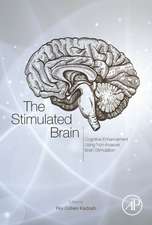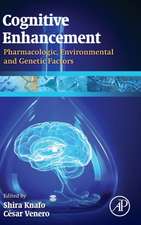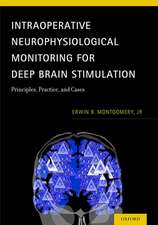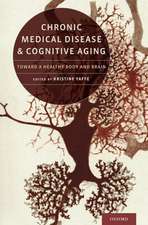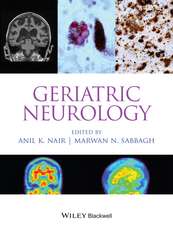How the Brain Talks to Itself: A Clinical Primer of Psychotherapeutic Neuroscience
Autor Jay E Harrisen Limba Engleză Paperback – 24 mar 1998
Unlike other books in this area that have narrow focuses, How the Brain Talks to Itself gives you an extensive and thorough exploration of the human condition by examining the effect that impairment of the left hemisphere has on goals and ambitions, problemsolving, the formation of syndromes, the use of transitional object transference in stabilizing patient identity, and how the brain registers, organizes, assesses, reflects, and acts on data. You'll find this information gives you a comprehensive framework for diagnosing and treating your patients. Chapters will further enhance your knowledge and help you improve your skills by:
- amplifying what we can learn from the conventional mental status exam
- prioritizing and targeting therapeutic interventions
- providing a framework for fitting advances in psychopharmacology into psychotherapy
- reconciling disparate forms of psychotherapy in the context of a neural-systems informed “structural therapy”
How the Brain Talks to Itself combines vast domains of data so that higher cortical functions consistently relate to their corresponding identity functions. You'll explore the mechanisms that link synaptic potentiation to the emotionally and cognitively organized memories that sustain development. These mechanisms process the cognitive, social, and emotional data that are needed for problemsolving. You'll also see how the ways in which synaptic potentiations are comprised by definable varieties of stress that lead to the spectrum of DSM-IV syndromes.
Author Jay E. Harris, MD, derives functional and structural principles from all of the disciplines--psychoanalytic psychology, cognitive neuroscience, clinical psychiatry, neurology, and linguistics--relevant to the brain's development, information processing, problemsolving, and syndrome formation. He includes case histories, clinical vignettes, and diagnostic examples of mental status dialogues with patients to help you in your understanding of this complex topic. You'll find that How the Brain Talks to Itself answers many questions you have about the brain's role in identity formation and resultant clinical sydromes.
Preț: 442.17 lei
Preț vechi: 465.43 lei
-5% Nou
Puncte Express: 663
Preț estimativ în valută:
84.61€ • 88.34$ • 70.02£
84.61€ • 88.34$ • 70.02£
Carte tipărită la comandă
Livrare economică 04-18 aprilie
Preluare comenzi: 021 569.72.76
Specificații
ISBN-13: 9780789004093
ISBN-10: 0789004097
Pagini: 440
Ilustrații: black & white illustrations
Dimensiuni: 152 x 229 x 29 mm
Greutate: 0.68 kg
Ediția:1
Editura: Taylor & Francis
Colecția Routledge
Locul publicării:Oxford, United Kingdom
ISBN-10: 0789004097
Pagini: 440
Ilustrații: black & white illustrations
Dimensiuni: 152 x 229 x 29 mm
Greutate: 0.68 kg
Ediția:1
Editura: Taylor & Francis
Colecția Routledge
Locul publicării:Oxford, United Kingdom
Public țintă
Professional Practice & DevelopmentCuprins
Contents Introduction
- How Does the Brain Talk to Itself?
- What Does This Text Do?
- What Is This Primer?
- Chapter 1. The Functional Anatomy of Consciousness
- A Neural Systems Approach to the Brain's Inner Language
- How Does the Brain Manage Consciousness?
- How Do Metafunctions Regulate Intrapsychic Identity?
- What Is Articulatory Rehearsal?
- What Is Inner Speech?
- What Is Social Speech?
- Functional/Structural Links in System Consciousness
- How Do We Explain the Duality of Consciousness?
- Distributed Systems
- Memory
- Terms for Types of Memory
- A Top-Down Information-Processing Model
- Information-Processing Systems
- How the Brain is Socialized
- How Identifications Mediate the Brain's Socialization
- The Anatomy of Thought
- Neotony: Consciousness Develops Cyclically
- Long-Term Potentiation (LTP)
- The Regulation of Long-Term Potentiation
- Long-Term Potentiation of Distributed Systems
- Chapter 2. Foundations of Clinical Neuroscience
- What Is Experience?
- Sources of Laterality
- Transfer LTP
- Functions of the Prefrontal System
- How Does the Amygdala Condition the Infant's Brain?
- Instinct, Conditioning, and Drive
- How the Amygdala Embodies Pleasure and Pain
- How the Amygdala Regulates the Executive's Signal Systems
- How Do We Evoke and Sense Our Past?
- How Can Emotional Contexts Become Explicit?
- The Foundations of Cognitive Processing
- CA 1's Fidelity, CA 3's Promiscuity
- The Hippocampus' Micro- and Macroanatomy
- How Associations Are Linked
- Conclusion: Truth Is Beauty, Beauty Truth
- Chapter 3. The Anatomy of Our Being
- The Stuggle of a Higher Consciousness
- The Neural Regulation of Experience
- What Happens When Our Identity Is Threatened?
- A Further Anatomical Inquiry into Problem Solving
- The Neocortex's Anatomical Structure
- How Does the Caudate Mediate Consciousness and Drive?
- The Cerebellum's Role as a Motor Memory Bank
- The Drives Are Behavioral States
- Neurobiological Mechanisms of Anxiety Regulation
- Psychoanalytic Drive Regulation: A Neural Systems Perspective
- Stress Regulation
- The Roots of Emotional Organization
- Chapter 4. How We Become Who We Are: Incarnating Psychoanalysis
- Introduction: A Neural View of the Stages of Life
- Long-Term Potentiation as a Developmental Mechanism Stress
- Terms for How We Become Who We Are
- Psychoanalytic Structural Theory
- How Id, Superego, and Ego Fit into a Neural System's Model
- Dynamics: How Neural Systems Conflict
- Horizontal and Vertical Conflicts
- How Can Therapy Induce Change?
- How the Brain Structures Intrapsychic Development
- The Development of Primary Narcissism
- Infant Development: An Overview
- Conclusion
- Chapter 5. The Stages of Life
- Spiral Synthesis: The Brain's Growing Garden of the Mind
- Infancy (Zero to Twenty-Four Months)
- Drive Binds
- Anxiety Regulation in Infancy
- Cognitive Advances in the Transition to Young Childhood
- Perceptual Advances in the Transition to Young Childhood
- The Primal Scene's Reorganization of Intrapsychic Identity
- The Affect of Trauma on Developmental Stage Change
- Young Childhood (Twenty-Four to Forty-Two Months)
- Two Types of Ambivalence
- Abandonment Anxiety: The Regulation of Ambivalence
- Cognitive Development in Young Childhood
- The Oedipal Period (Twenty-Four to Seventy-Two Months)
- How Oedipal Fantasy Transforms the Social Subject
- Cognitive Development in the Oedipal Period
- Social Speech: The Cognitive Foundations of Social Rules
- Adolescent Cognition
- Chapter 6. How Adults Solve Problems
- Introduction: Mythopoiesis in the Brain
- The Mythopoesis of Coping and Adapting
- Using Myths and Legends as Survival Strategies
- From M
Notă biografică
Jay E. Harris MD, is a Consulting Psychiatrist in the Stony Brook University Student Health Counseling Centre on Long Island, USA.
Descriere
Now you can more fully understand and help your clients with this description of the development of the consciousness of identity as it occurs in well-defined stages. How the Brain Talks to Itself synthesizes recent discoveries in cognitive neuroscience with a psychoanalytic understanding of human dynamics and a working model for clinical diagnosis. In studying how the brain talks to itself to solve survival problems, this text looks at two sets of situations. In the first, neural possibilities mesh adaptively. In the second, dysfunction clouds the picture—something has gone wrong with the brain, in the life, or in a combination that ends in clinical syndromes.

